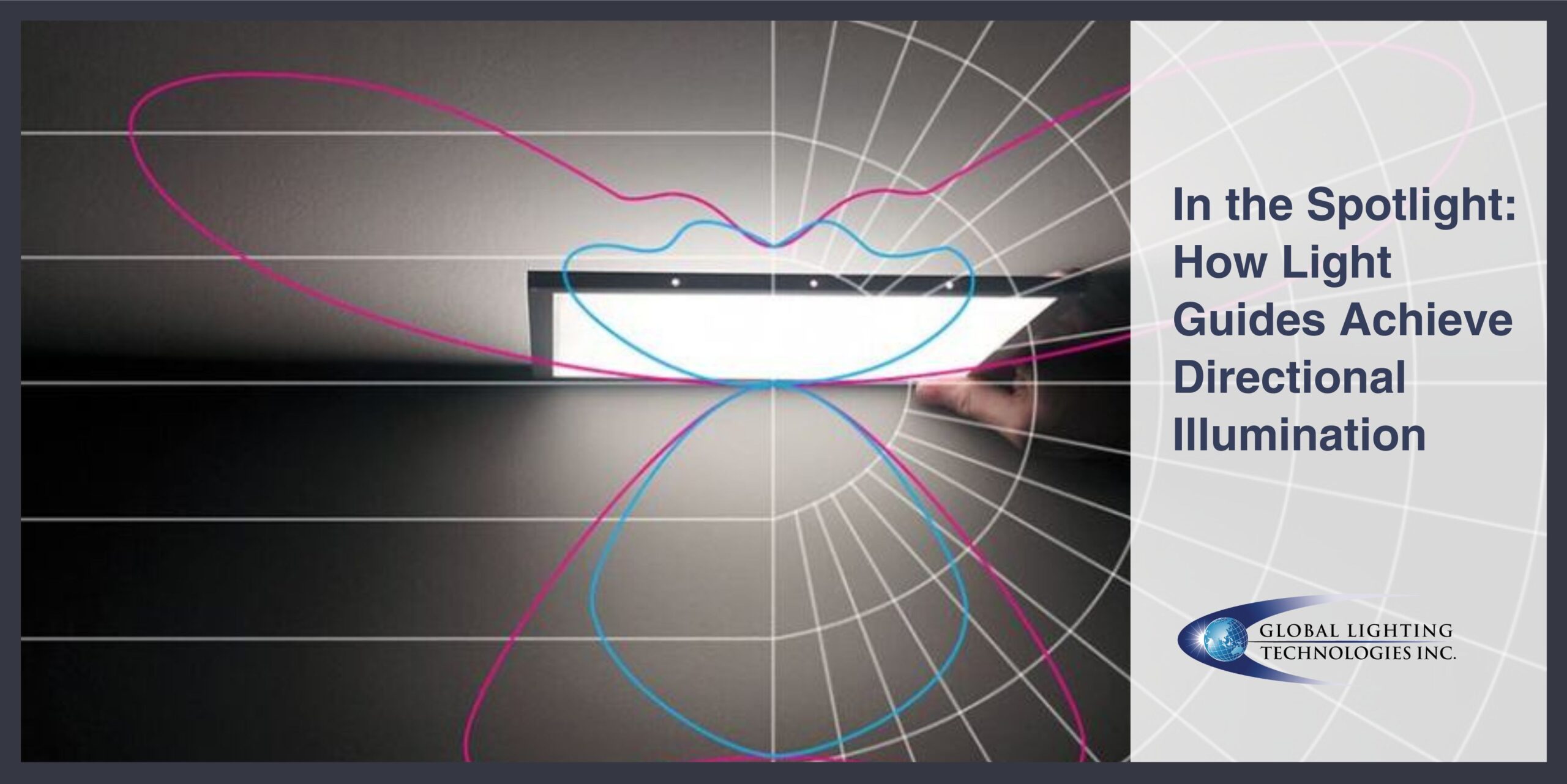The Goal of Directional Illumination
When your final product requires light to be emitted in a specific direction, location or area, a directional light distribution pattern is often a strong solution. Light can be a powerful tool to create focus and enhance visibility when engineered with a specific goal in mind. Directional illumination has dozens of applications; it’s a design feature our engineers deploy time and time again.
Read on to learn more about this approach and how it can elevate the value of your product design.
The Two Kinds of Directional Illumination
When you begin product development with our team, we help identify which type suits the project goals: off-axis or focused (one direction).
Off-axis directional illumination is used in applications like exit signs and illuminated computer keyboards. In each case, light must emit at an angle to create the best visibility.
Focused directional illumination is when a product requires that light emitted from the light guide is directed toward a single point or area in space. We leverage this type in automotive applications like spotlighting footwells and in beauty mirror ring lights, among others.
Applications in Different Industries
Directional illumination is used in light guide designs for products in many industries. From general lighting to automotive, here are some key examples:
- Egress Signage: Directional illumination works well for egress signage because the product is normally above eye level. As a result, light from the signs must be primarily visible to an individual looking forward and/or upward. It’s important that egress and emergency signage are designed to emit light downward and in front of the sign for maximum visibility. They must also have a wide viewing angle so the image is visible to people not directly in front of the sign.
- Consumer Goods: Consumer electronics like smart watches, laptops and tablets also use directional illumination because users often view each of these light sources at an angle rather than directly overhead. Other consumer goods like a lighted vanity mirror are designed with a light guide that directs the emitted light towards the visible area of the reflection. For instance, if the mirror is circular, the light is directed toward a position in front of and in the center of the user’s face.
- Automotive: Puddle lights, reading lights or door pocket lights are also common applications of directional illumination.
Our experienced team can work with yours to leverage its benefits and create a custom light guide solution.
Our Proven Process Applied to Directional Illumination
Your team deserves to work with a light guide manufacturer that uses a proven process to bring your vision to life. From Pre-Discovery to Manufacturing, our proven process considers how we incorporate directional illumination.
Once we identify your product or solutions requirements and goals, we determine if this kind of illumination should be part of the solution. During the Design phase, our engineers run ray tracing in our simulation software to see the direction light rays will travel, which is the foundation for the this type of design.
Depending on the type of directional illumination that’s required, we determine the mechanical design of your solution. We establish the geometry of the light guide (how light will bounce through the part) and if a taper is needed to contain illumination.
Our engineers also use optical design to see which angles the optical features should be set at based on how light needs to be distributed. Finally, optical films can be applied to add brightness or diffuse the light depending on the application.
You’ll work closely with our experienced team throughout the entire process.
Establish the Need Early
Save yourself time and resources by working with an experienced light guide manufacturer who can help you identify the need for directional illumination early in product development. It’s best for our team to know the product goal as soon as possible to leverage our simulation software at the start.
We put careful thought, consideration and testing into designing directional illumination solutions. The more information we have up front, the faster and more efficient both our teams can be!
Achieve Product Goals With Directional Illumination
Lean on our engineering team to help you consider how directional illumination impacts the effectiveness, uniformity and brightness of your product. No matter your industry or application, we’re ready to support on your illumination needs with a custom light guide solution. Connect with our team here to begin your project.
